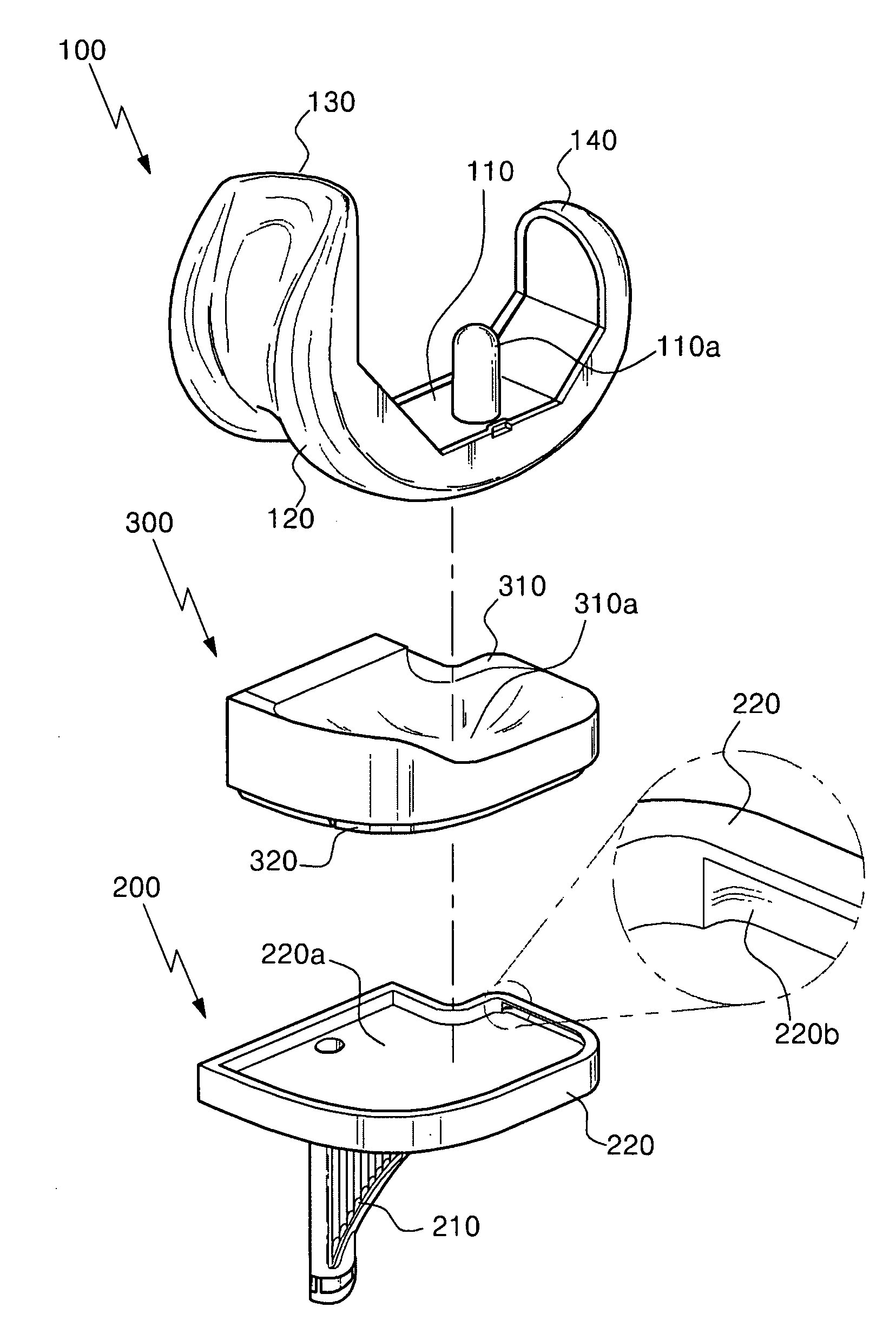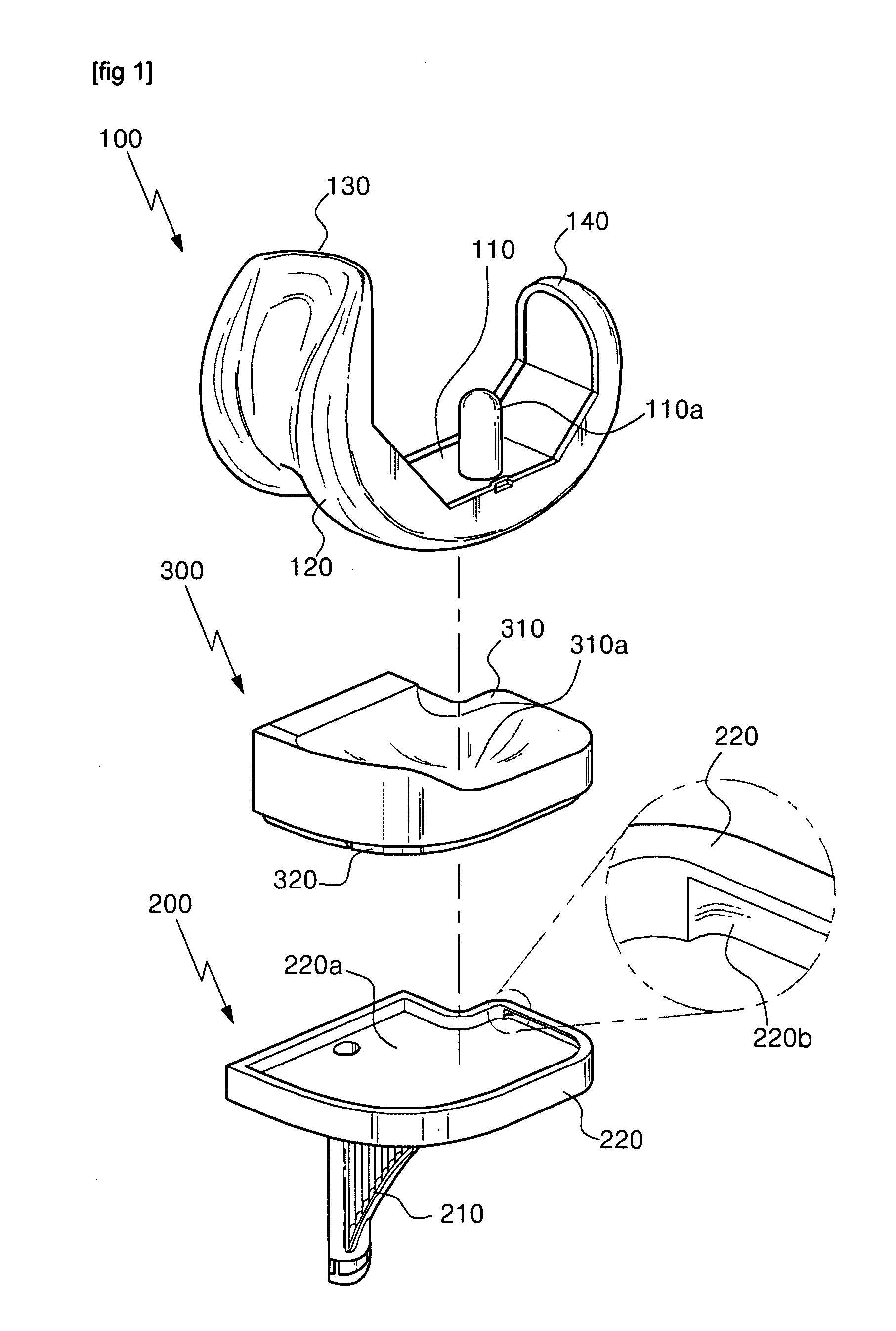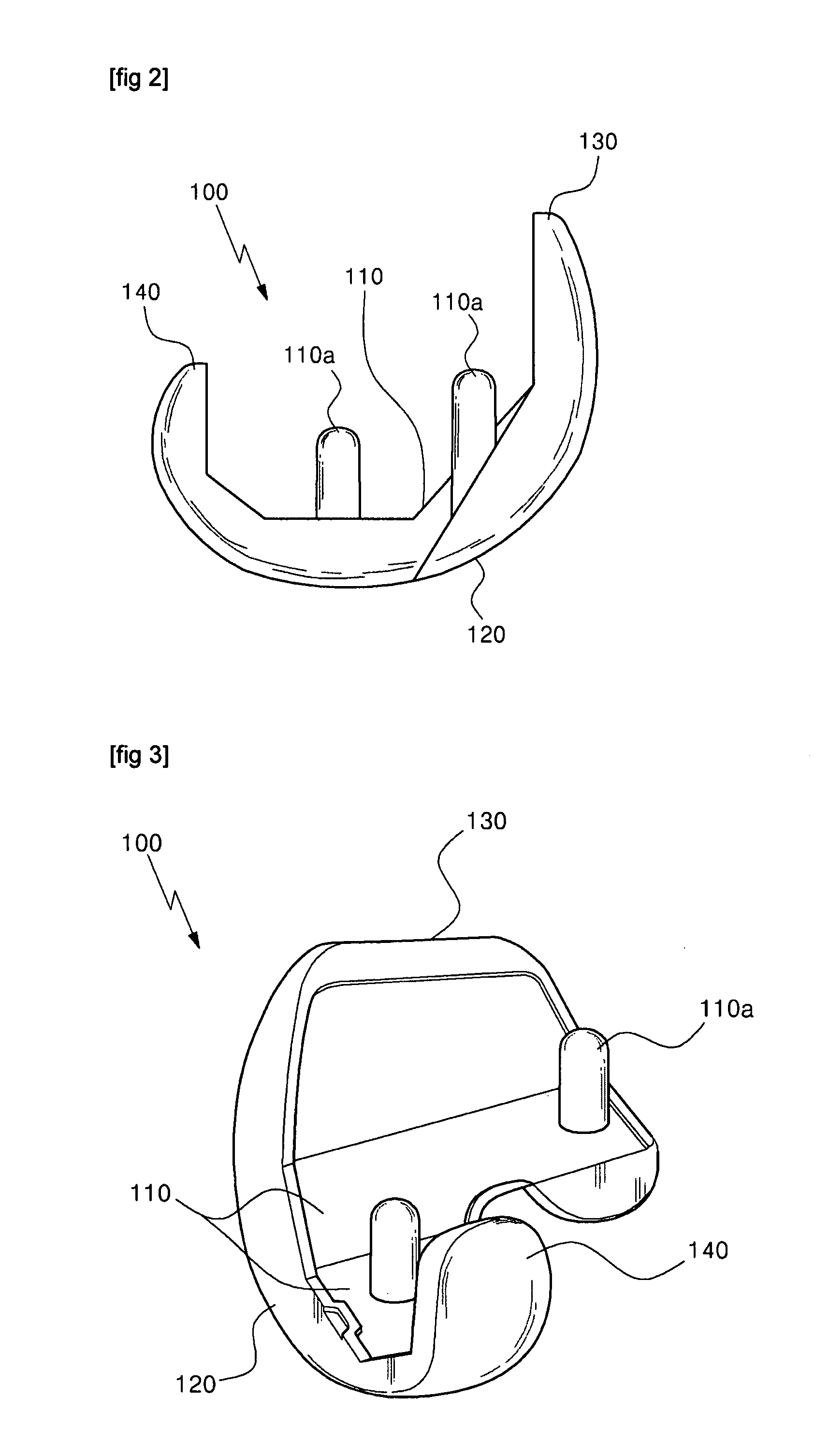Knee joint prosthesis for bi-compartmental knee replacement and surgical devices thereof
- Summary
- Abstract
- Description
- Claims
- Application Information
AI Technical Summary
Benefits of technology
Problems solved by technology
Method used
Image
Examples
Embodiment Construction
[0038]The present invention will now be described more fully hereinafter with reference to the accompanying drawings, in which preferred embodiments of the invention are shown. This invention may, however, be embodied in many different forms and should not be construed as being limited to the embodiments set forth herein. Rather, these embodiments are provided so that this disclosure will be thorough and complete, and will fully convey the scope of the invention to those skilled in the art.
[0039]FIG. 1 is a dissembled perspective view of a knee joint prosthesis for a bi-compartmental replacement according to an embodiment of the present invention, FIG. 2 is a side view of a femoral component of FIG. 1, FIG. 3 is a perspective view of the femoral component of FIG. 1, FIG. 4 is a side view of a tibial component of FIG. 1, FIG. 5 is a side view of a tibial bearing member of FIG. 1, FIG. 6 is a plan view of a femoral sizer according to an embodiment of the present invention, FIG. 7 is a...
PUM
 Login to View More
Login to View More Abstract
Description
Claims
Application Information
 Login to View More
Login to View More - R&D
- Intellectual Property
- Life Sciences
- Materials
- Tech Scout
- Unparalleled Data Quality
- Higher Quality Content
- 60% Fewer Hallucinations
Browse by: Latest US Patents, China's latest patents, Technical Efficacy Thesaurus, Application Domain, Technology Topic, Popular Technical Reports.
© 2025 PatSnap. All rights reserved.Legal|Privacy policy|Modern Slavery Act Transparency Statement|Sitemap|About US| Contact US: help@patsnap.com



